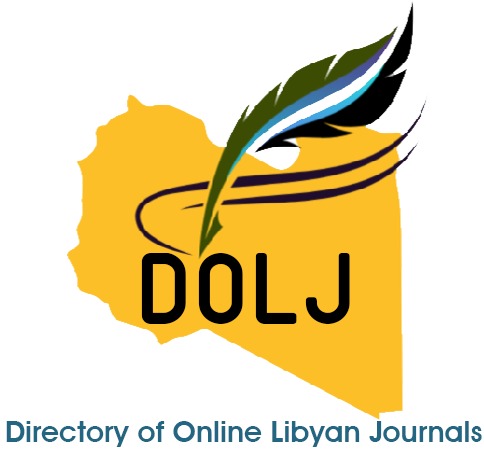Evaluation of the Immunological and Hematological Parameters in Acute Leukemia Patients: A Multi-center Study in Libya
Abstract
Acute leukemia (AL) is a cancer of the leukocytes. Classification of AL used blast morphology and cy-tochemical stains to categorize the diseases broadly into (ALL) and (AML). ALL is the most common type of leukemia in young children. This disease also affects adults, especially over the age of 65 years. The AML is the most common subtype of leukemia in adults and accounts for 15-20% of childhood leukemia. This study aimed to evaluate the changes in inflammatory markers and immune components during treatment of different acute leukemia subtypes in Libya. Furthermore, the effects on the hemostasis were also observed. The study was carried out on 105 acute leukemia Libyan patients their ages ranged from (2-88) years who were referred to the hematology clinic of different hospitals in Libya for the diagnosis and treatment. The mean age of AML patients was 31 years .49% of patients were males and 51% were females. 40% of patients were in M3 subtype. A+ was the most detected blood group (34%). There was a significant impact of blood group on basophils count (p=0.000), early diagnosis date on the monocytes count (p=0.03), and age on the MCHC (p=0.005). Also, there was a significant relationship between disease stages and PDW, ESR, and IG% (p=0.03, 0.012, and 0.035 respectively). CD33, CD14, and CD13 were the most detected receptors. In All group, the mean age was 15 years.59% were males and 41% were females. O+ was the most detected blood group (38%).53% of patients were B-All and 47% were T-All. There was a significant impact of date of diagnosis on the lymphocytes count (p=0.007), Blood group on the MCV (p=0.038). CD3, CD2, CD5 were the most detected receptors. Acute leukemia had a significant impact on the clinical outcome in compared to the healthy controls. Several clinical parameters such as patient's age, gender, date of diagnosis, and blood group had an impact on the disease process and prevalence and could be considered as risk factors. Additionally, these factors could be correlated with the laboratory parameters.
سرطان الدم الحاد (AL) هو سرطان يصيب كريات الدم البيضاء. يستخدم تصنيف سرطان الدم الحاد مورفولوجيا الخلايا والصبغات الكيميائية الخلوية لتصنيف الأمراض على نطاق واسع إلى (ALL) و (AML). يعد سرطان الدم الحاد النوع الأكثر شيوعًا من سرطان الدم لدى الأطفال الصغار. يصيب هذا المرض أيضًا البالغين، وخاصة فوق سن 65 عامًا. يعد سرطان الدم الحاد النوع الفرعي الأكثر شيوعًا من سرطان الدم لدى البالغين ويمثل 15-20٪ من سرطان الدم لدى الأطفال. هدفت هذه الدراسة إلى تقييم التغيرات في العلامات الالتهابية والمكونات المناعية أثناء علاج أنواع سرطان الدم الحاد المختلفة في ليبيا. علاوة على ذلك، لوحظت أيضًا التأثيرات على وقف النزيف. أجريت الدراسة على 105 مريضًا ليبيين مصابين بسرطان الدم الحاد تتراوح أعمارهم بين (2-88) عامًا والذين تم إحالتهم إلى عيادة أمراض الدم في مستشفيات مختلفة في ليبيا للتشخيص والعلاج. كان متوسط عمر مرضى سرطان الدم الحاد 31 عامًا. 49٪ من المرضى من الذكور و 51٪ من الإناث. كان 40% من المرضى من النوع الفرعي M3. كانت فصيلة الدم A+ هي الأكثر اكتشافًا (34%). كان هناك تأثير كبير لفصيلة الدم على عدد الخلايا القاعدية (p=0.000)، وتاريخ التشخيص المبكر على عدد الخلايا الوحيدة (p=0.03)، والعمر على MCHC (p=0.005). أيضًا، كانت هناك علاقة كبيرة بين مراحل المرض و PDW و ESR و IG% (p=0.03 و 0.012 و 0.035 على التوالي). كانت CD33 و CD14 و CD13 هي المستقبلات الأكثر اكتشافًا. في جميع المجموعات، كان متوسط العمر 15 عامًا. كان 59% من الذكور و 41% من الإناث. كانت فصيلة الدم O+ هي الأكثر اكتشافًا (38%). كان 53% من المرضى من B-All و 47% من T-All. كان هناك تأثير كبير لتاريخ التشخيص على عدد الخلايا الليمفاوية (ص = 0.007)، وفصيلة الدم على MCV (ص = 0.038). كانت CD3 وCD2 وCD5 هي المستقبلات الأكثر اكتشافًا. كان لسرطان الدم الحاد تأثير كبير على النتيجة السريرية مقارنة بالضوابط الصحية. كان للعديد من المعايير السريرية مثل عمر المريض وجنسه وتاريخ التشخيص وفصيلة الدم تأثير على عملية المرض وانتشاره ويمكن اعتبارها عوامل خطر. بالإضافة إلى ذلك، يمكن ربط هذه العوامل بمعايير المختبر











